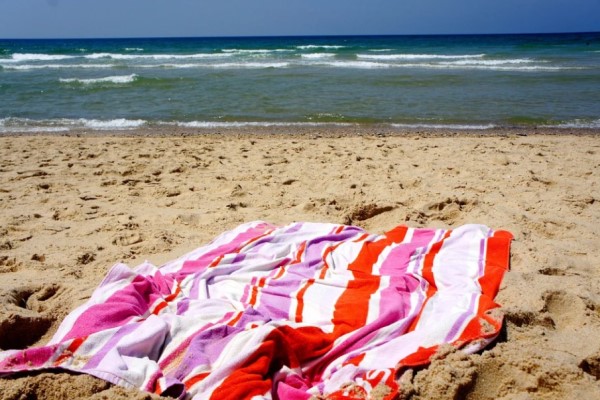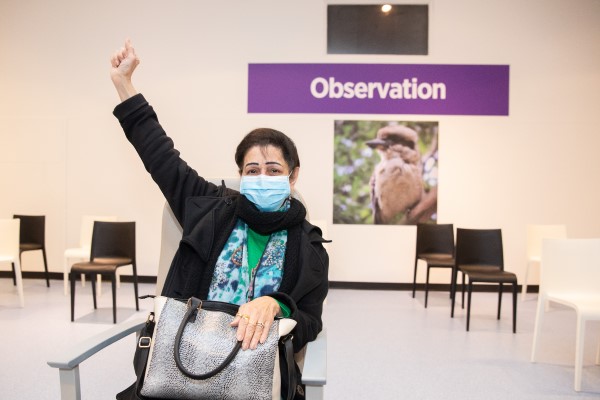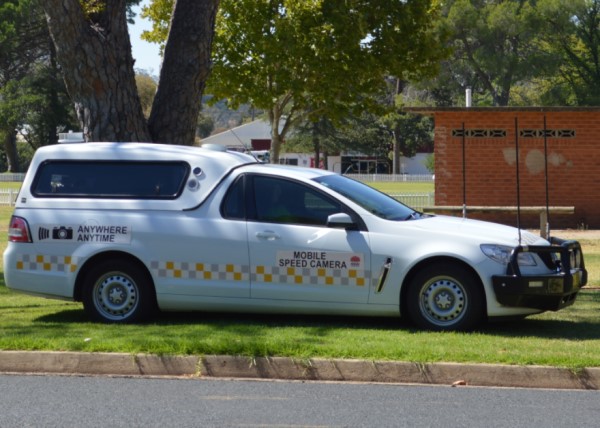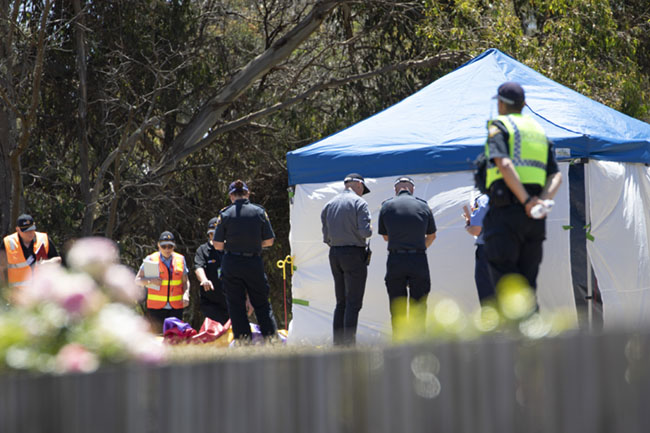Selected
- Details
- Written by Grant Broadcasters
- Category: Selected
- Hits: 131

If you've been saving up your annual leave due to COVID-19, you're not alone.
New figures from Roy Morgan have revealed Australian workers have accrued a record amount of annual leave.
The data showed 8.1 million Australians in paid employment have a combined 185 million days of annual leave owing to them, as of September this year.
It represents a more than 23 per cent increase on the 149.5 million days of leave available in September 2020.
The data showed a sharp rise in accrued leave coincided with the arrival of the Delta variant and lockdowns in eastern states.
Roy Morgan chief executive Michele Levine said ahead of Christmas and summer, there had been a substantial increase in the number of people with two or more weeks of leave owed.
"Now, 50.7 per cent of Australia's paid workers have at least two weeks leave compared to 46 per cent of paid workers a year ago," she said.
"There are now 1.39 million Australians who now have at least seven weeks of annual leave due, up from 1.22 million."
However, there have been fewer people in 2021 with less than two weeks of leave, compared to 2020.
Figures showed 10.7 per cent of workers have less than a fortnight owing to them of leave, compared to a bit more than 14 per cent last year.
Ms Levine said with people having large amounts of leave, there was added incentive for tourism operators to capitalise on the desire to travel.
"The largest markets of NSW and Victoria have been hardest hit by COVID-19 over the last two years and present the biggest opportunity for tourism operators in Queensland, Tasmania and South Australia to tap into," she said.
"It is more important than ever for domestic travel and tourism operators to appeal to the 6.7 million Australians who have at least two weeks of annual leave up their sleeve."
© AAP 2021
Image: https://pixabay.com/photos/beach-towel-horizon-sand-410357/ (free image)
- Details
- Written by Grant Broadcasters
- Category: Selected
- Hits: 97

Health officials have stressed there will be more than enough COVID-19 vaccines to meet demand for boosters and for when children are eligible to receive the jab.
The rapid rise of cases across the country, particularly in NSW, has prompted greater emphasis on the importance of booster shots, with some clinics having to turn people away due to the rush on third doses.
An extra 2.3 million people will be able to receive the vaccine from January when five- to 11-year-olds become eligible.
However, the head of the country's vaccine rollout Lieutenant-General John Frewen said there would not be difficulty with supply.
"The amounts that we have available far exceed any demand right now," he told reporters in Canberra.
"(January) will start to see a bit more pressure come onto the system, the big demand when large numbers of people become eligible for boosters is into the February and March period."
The country's leading vaccine advisory group said third doses of the vaccine would not be brought forward further.
The gap between the second and third doses will remain at five months, although vaccine providers have been advised to give some flexibility around time frames during the Christmas period should people be one or two weeks early for their dose.
Lt Gen Frewen said more than four million people will be eligible for boosters by the end of the year, with the number to rise to seven million in January and 11 million in February.
So far, more than one million Australians have received their booster shot.
Chief Medical Officer Professor Paul Kelly said despite the rise in cases, the vaccines worked against the new variants.
"The vaccine remains effective against severe disease, perhaps a little less than it is the case with Delta, but it does remain effective," he said.
"That is one of the reasons why we are seeing increases in cases but not so much of an increase in hospitalisations or other forms of severe disease."
Despite the rise in cases due to the Omicron variant, states continue to ease restrictions.
NSW and Victoria will no longer require international arrivals to isolate for 72 hours upon arrival.
Fully vaccinated travellers will instead be required to get a test within 24 hours of arrival and isolate until they get a negative result.
It comes as NSW recorded its highest daily number of cases, with 2213 on Friday, and one death.
Victoria registered 1510 new cases and seven deaths while the ACT had 20 new cases.
South Australia will ease restrictions further on December 28 despite recording 64 new cases.
Queensland Premier Annastacia Palaszczuk reintroduced a mask mandate for hospitals, retail, public transport and airports after the state recorded 16 new cases.
The Northern Territory had eight infections, leading to Tennant Creek being forced into a lockdown one week before Christmas.
The national vaccination rate for over 16s has passed 90 per cent.
© AAP 2021
Image: News
- Details
- Written by Grant Broadcasters
- Category: Selected
- Hits: 129

Speed warnings are making a comeback on NSW roads less than a year after the removal of fixed signs triggered a major boost in fines, but this time they will be atop mobile camera cars.
The number of motorists who have copped infringement penalties since fixed signage was removed across the state in November 2020 has escalated.
But from February large double-sided blue and white warnings will again appear, only they'll be on the roofs of all mobile speed camera vehicles.
Deputy Premier and Minister for Regional Transport and Roads Paul Toole says the new signs will be rolled out along with an additional previously announced 1000 fixed signs.
"This is about striking the right balance," he told reporters on Friday.
"There is no excuse for those who are speeding ... this is a government that has listened to the community."
In November, former NSW roads minister Duncan Gay told a parliamentary road safety inquiry the removal of the signs was done in good faith but was the wrong decision.
"Speed cameras are important but they shouldn't be there for entrapment," he said at the time.
Revenue NSW data shows the number of mobile digital speed camera fines where the speed limit was exceeded by 10km/h or less went from 3222 in October 2020 to 27,855 by February 2021.
Opposition leader Chris Minns welcomed the decision, saying common sense had prevailed.
"These hidden speed cameras were raising revenue on a giant scale in NSW like nothing we had ever seen before," he told reporters on Friday.
The removal of signs was about revenue raising, not road safety, he claimed.
"They were on track to collect more in one year than they collected in the previous five years, combined.
"We would much rather someone not commit the offence in the first place, rather than receive a fine in the mail two to three weeks after the offence has been committed."
The government says camera revenue goes directly into the Community Road Safety Fund to improve road safety and provide education, lifesaving infrastructure and enforcement.
© AAP 2021
Image: Mattinbgn (talk · contribs), CC BY 3.0 <https://creativecommons.org/licenses/by/3.0>, via Wikimedia Commons (image for illustration purposes)
- Details
- Written by Grant Broadcasters
- Category: Selected
- Hits: 115

Worksafe Tasmania officers (left) inspect the jumping castle at Hillcrest Primary School in Devonport, Tasmania, Thursday, December 16, 2021 (AAP Image/Grant Wells)
Five children have died after a wind gust blew a jumping castle into the air at a primary school in northwest Tasmania.
They fell from a height of about 10 metres in the freak accident during end-of-year celebrations at Hillcrest Primary School in Devonport on Thursday.
Tasmanian Police Commissioner Darren Hine confirmed two boys and two girls had died in the incident, and another five children were in hospital, four in a critical condition and one with serious injuries.
In a statement on Thursday evening police confirmed a fifth child died in hospital.
"These children were meant to be celebrating their last day of primary school, instead we're all mourning their loss," Mr Hine told reporters.
"Our hearts are breaking for the families and the loved ones, schoolmates, teachers, of these young people who were taken too soon."
Police and WorkSafe Tasmania are investigating the incident and a report will be prepared for the state coroner, who has already inspected the scene.
Commissioner Hine said the investigation would take "quite some time" and a number of people and witnesses needed to be interviewed.
"Our focus now is supporting those who are tragically affected by what's happened," he said.
Hillcrest Primary School closed for the day and told parents to urgently pick up their children not long after the incident at 10am.
Multiple ambulance crews rushed to the school and several rescue helicopters helped take the children to hospital.
Police initially reported one child had died before confirming other deaths later in the afternoon.
Counselling is being made available to families, the community and first responders.
Commander Debbie Williams said it appeared the children fell from a height of about 10 metres and described the scene as very distressing and confronting.
Bob Smith, who lives near the school, told The Mercury newspaper he saw kids on the ground.
"There was one really strong gust of wind on what (was) a beautiful calm day," he said.
"At first we thought it might have been an emergency services training exercise then the reality of what was happening kicked in."
The school was holding a 'Big Day In' celebration to mark the end of the school year.
"(The) tragedy is something that will have a deep impact on the northwest community," Tasmanian Premier Peter Gutwein said.
Prime Minister Scott Morrison described the accident as unthinkably heartbreaking.
"Young children on a fun day out, together with their families and it turns to such horrific tragedy. At this time of year, it just breaks your heart," he told reporters on the NSW Central Coast.
An online fundraising account to support the families had raised more than $24,000 by Thursday evening.
© AAP 2021
Page 109 of 191